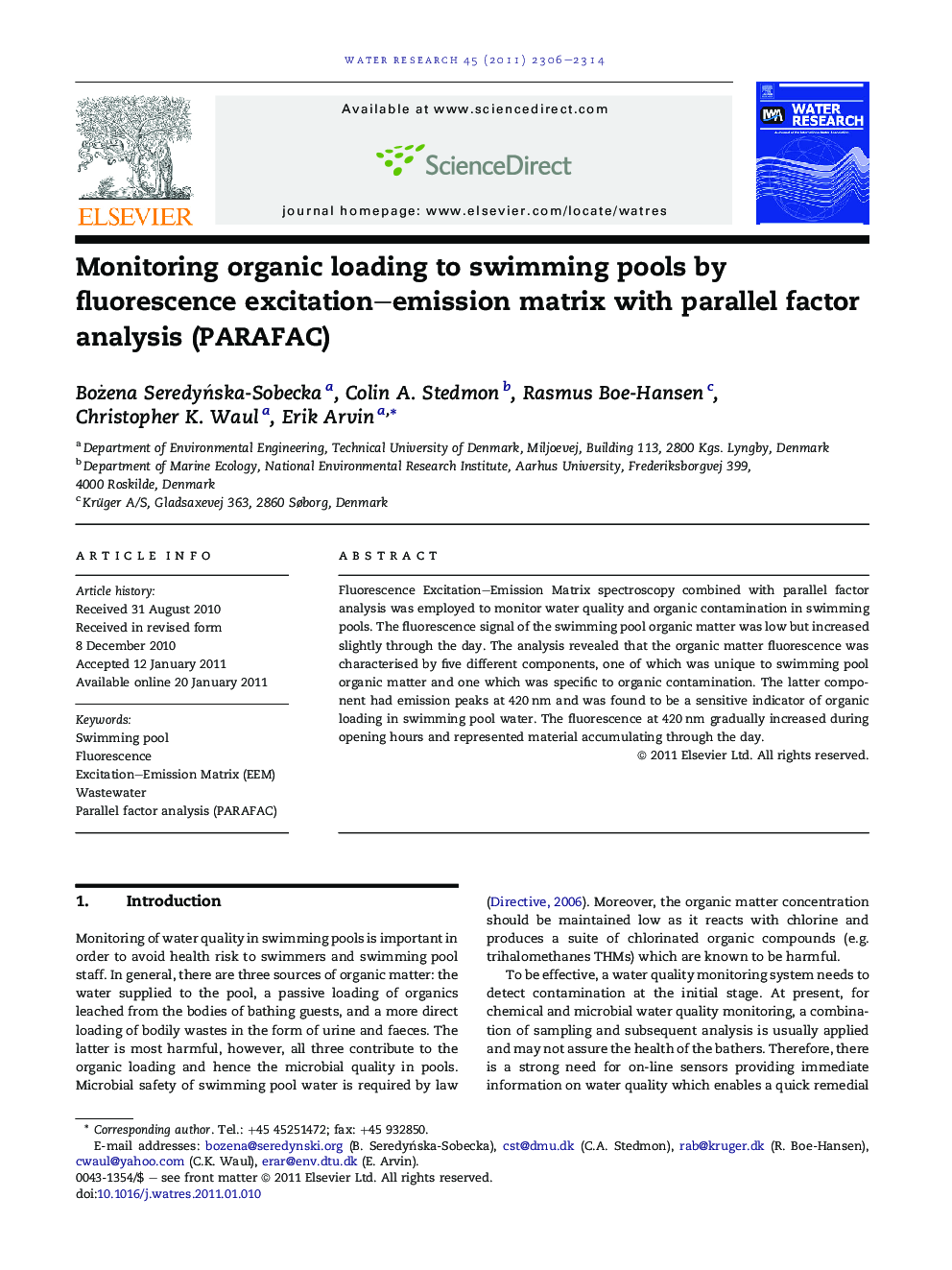| Article ID | Journal | Published Year | Pages | File Type |
|---|---|---|---|---|
| 4484325 | Water Research | 2011 | 9 Pages |
Fluorescence Excitation–Emission Matrix spectroscopy combined with parallel factor analysis was employed to monitor water quality and organic contamination in swimming pools. The fluorescence signal of the swimming pool organic matter was low but increased slightly through the day. The analysis revealed that the organic matter fluorescence was characterised by five different components, one of which was unique to swimming pool organic matter and one which was specific to organic contamination. The latter component had emission peaks at 420 nm and was found to be a sensitive indicator of organic loading in swimming pool water. The fluorescence at 420 nm gradually increased during opening hours and represented material accumulating through the day.
Research highlights► Organic matter fluorescence can be applied for monitoring swimming pool water quality. ► A humic-like fluorescence peak (peak C) was found to be a very good indicator for anthropogenic release to swimming pool water. It exhibited emission maximum at 420 nm and had two excitation peaks: one below 240 nm and the other at 330 nm. ► A fluorescence component specific to swimming pool organic matter has been found which exhibited excitation maximum at <240 nm and 310 nm and emission maximum at 360 nm.
